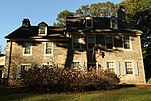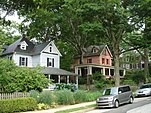Lansdale/Doylestown Line
| Lansdale/Doylestown Line | |||||||||||||||||||||||||||||||||||||||||||||||||||||||||||||||||||||||||||||||||||||||||||||||||||||||||||||||||||||||||||||||||||||||||||||||||||||||||||||||||||||||||||||||||||||||||||||||||||||||||||||||||||||||||||||||||||||||||||||||||||||||||||||||||||||||||||||||||||||||||||||||||||||||||||||||||||||||||||||||||||||||||||||||||||||||||||||||||||||||||||||||||||||||||||||||||||||||||||||||||||||||||||||||||||||||||||
|---|---|---|---|---|---|---|---|---|---|---|---|---|---|---|---|---|---|---|---|---|---|---|---|---|---|---|---|---|---|---|---|---|---|---|---|---|---|---|---|---|---|---|---|---|---|---|---|---|---|---|---|---|---|---|---|---|---|---|---|---|---|---|---|---|---|---|---|---|---|---|---|---|---|---|---|---|---|---|---|---|---|---|---|---|---|---|---|---|---|---|---|---|---|---|---|---|---|---|---|---|---|---|---|---|---|---|---|---|---|---|---|---|---|---|---|---|---|---|---|---|---|---|---|---|---|---|---|---|---|---|---|---|---|---|---|---|---|---|---|---|---|---|---|---|---|---|---|---|---|---|---|---|---|---|---|---|---|---|---|---|---|---|---|---|---|---|---|---|---|---|---|---|---|---|---|---|---|---|---|---|---|---|---|---|---|---|---|---|---|---|---|---|---|---|---|---|---|---|---|---|---|---|---|---|---|---|---|---|---|---|---|---|---|---|---|---|---|---|---|---|---|---|---|---|---|---|---|---|---|---|---|---|---|---|---|---|---|---|---|---|---|---|---|---|---|---|---|---|---|---|---|---|---|---|---|---|---|---|---|---|---|---|---|---|---|---|---|---|---|---|---|---|---|---|---|---|---|---|---|---|---|---|---|---|---|---|---|---|---|---|---|---|---|---|---|---|---|---|---|---|---|---|---|---|---|---|---|---|---|---|---|---|---|---|---|---|---|---|---|---|---|---|---|---|---|---|---|---|---|---|---|---|---|---|---|---|---|---|---|---|---|---|---|---|---|---|---|---|---|---|---|---|---|---|---|---|---|---|---|---|---|---|---|---|---|---|---|---|---|---|---|---|---|---|---|---|---|---|---|---|---|---|---|---|---|---|---|---|---|---|---|---|---|---|---|---|---|---|---|---|---|---|---|---|---|---|---|---|---|---|---|---|---|---|---|---|---|---|---|---|---|---|---|---|---|---|---|
standard gauge | |||||||||||||||||||||||||||||||||||||||||||||||||||||||||||||||||||||||||||||||||||||||||||||||||||||||||||||||||||||||||||||||||||||||||||||||||||||||||||||||||||||||||||||||||||||||||||||||||||||||||||||||||||||||||||||||||||||||||||||||||||||||||||||||||||||||||||||||||||||||||||||||||||||||||||||||||||||||||||||||||||||||||||||||||||||||||||||||||||||||||||||||||||||||||||||||||||||||||||||||||||||||||||||||||||||||||||
| Electrification | Overhead line, 12 kV 25 Hz AC | ||||||||||||||||||||||||||||||||||||||||||||||||||||||||||||||||||||||||||||||||||||||||||||||||||||||||||||||||||||||||||||||||||||||||||||||||||||||||||||||||||||||||||||||||||||||||||||||||||||||||||||||||||||||||||||||||||||||||||||||||||||||||||||||||||||||||||||||||||||||||||||||||||||||||||||||||||||||||||||||||||||||||||||||||||||||||||||||||||||||||||||||||||||||||||||||||||||||||||||||||||||||||||||||||||||||||||
| |||||||||||||||||||||||||||||||||||||||||||||||||||||||||||||||||||||||||||||||||||||||||||||||||||||||||||||||||||||||||||||||||||||||||||||||||||||||||||||||||||||||||||||||||||||||||||||||||||||||||||||||||||||||||||||||||||||||||||||||||||||||||||||||||||||||||||||||||||||||||||||||||||||||||||||||||||||||||||||||||||||||||||||||||||||||||||||||||||||||||||||||||||||||||||||||||||||||||||||||||||||||||||||||||||||||||||
The Lansdale/Doylestown Line is a
Restored service has been proposed, but is not planned by SEPTA. The line is currently used by the East Penn Railroad, serving Quakertown's industrial complexes and distribution centers. With 6,884 daily riders every weekday in Fiscal year 2022, it is the second busiest line in SEPTA's Regional Rail network.[2]
History
20th century
This section possibly contains original research. (September 2010) |

The Lansdale/Doylestown Line utilizes what is known as the
Originally arriving and departing at the former
Electrified service between Philadelphia and
Service to Bethlehem and the Lehigh Valley languished due to the post-World War II surge of the automobile as well as the opening of the Pennsylvania Turnpike Northeast Extension in 1957. Service north of Lansdale in the non-electrified territory was terminated by SEPTA on July 29, 1981.[3] Trackage north of Quakertown was dismantled after the railbed was leased for use as the interim Saucon Rail Trail.
Between 1984–2010 the route was designated R5 Doylestown and R5 Lansdale as part of SEPTA's diametrical reorganization of its lines. Lansdale and Doylestown trains operated through the city center to the Paoli Line on the ex-Pennsylvania side of the system.[4]
21st century
In the early 2000s, upgrades were made to several stations to make them ADA-accessible by giving them elevated platforms. In 2005, construction began[5] on a new station at Fort Washington which was moved 300 feet to the south.[6] In 2007, construction began to reconstruct the platforms at North Wales station and build a new station atop the existing footprint.[7] In 2008, construction began to build a new station at Ambler across the street from the existing station.[7] All three projects were complete by 2010.[8][9]
The R-number naming system was dropped on July 25, 2010.[10] As of 2022[update], most Lansdale/Doylestown Line trains continue through Center City to Wilmington or Newark on the Wilmington/Newark Line on weekdays and to Malvern or Thorndale on the Paoli/Thorndale Line on weekends.[11]
On August 29, 2011, SEPTA adjusted the midday service pattern to encourage ridership at
On December 18, 2011, SEPTA eliminated weekend service at Link Belt and New Britain due to low ridership.[13][14] In the fall of 2012, New Britain was added back to the weekend schedule as a flag stop.[15][16]
A large
SEPTA activated positive train control on the Lansdale/Doylestown Line from Doylestown to Glenside on June 13, 2016. Positive train control was activated from Glenside to Fern Rock on December 12, 2016 and from Fern Rock to 30th Street on January 9, 2017.[21]
On April 9, 2020, service on the line was truncated to Lansdale due to the COVID-19 pandemic. Service to Doylestown resumed on June 22, 2020.[22][23] While service has resumed, it remains more limited than before the COVID-19 pandemic, especially during peak hours.
Pre-pandemic, during peak hours there were 10 trains in the morning (arriving in Center City from open until 9:30 a.m.) and 11 peak trains in the afternoon (leaving Center City between 4 and 7 p.m.).
As of early 2024, during the same peak hours, there are only 7 trains in the morning and 6 peak trains in the afternoon.[26] Of the morning trains, only 4 are express trains; one is express from Fort Washington to Temple University, and 3 are express from Jenkintown to Temple University.[26] Only three of the afternoon trains are express; one is express from Temple University to Jenkintown and 1 was express from Temple University to Fort Washington.[26]
Stations
The Lansdale/Doylestown Line makes the following station stops after leaving the Center City Commuter Connection; stations indicated with a gray background are closed.
| Zone[27] | Station | Date opened | Connections / notes | ||
|---|---|---|---|---|---|
| C | Temple University |
2.1 (3.4) | 1911 | ||
| 1 | North Broad |
2.9 (4.7) | 1929 | 54 The station was known as North Broad Street until 1992. | |
| Wayne Junction |
5.1 (8.2) | 1881 | |||
| Logan | One of four stations discontinued by SEPTA on October 4, 1992.[28] | ||||
| Tabor | |||||
| Fern Rock Transportation Center |
7.3 (11.7) | September 9, 1956 | 70
| ||
| Philadelphia city line | |||||
| 2 | Melrose Park |
8.4 (13.5) | |||
| Elkins Park | 9.2 (14.8) | May 14, 1899[29] | 28 The station was originally known as Elkins, but has also been known as Ashbourne. | ||
| 3 | Jenkintown–Wyncote | 10.8 (17.4) | 1859 | 77 The station was originally known as Jenkintown. | |
| Glenside | 11.9 (19.2) | 77
| |||
| North Hills | 13.0 (20.9) | ||||
| Oreland | 13.9 (22.4) | 1890 | |||
| Fellwick | 14.8 (23.8) | 1855[30] | Known as Sandy Run from 1855–March 1884,[31] Camp Hill from March 1884–February 16, 1931,[32] and Sellwick.[32] Closed on November 10, 1996 due to low ridership.[33] | ||
| Fort Washington |
15.9 (25.6) | 1903 | 201
| ||
| Ambler |
17.3 (27.8) | 1855[30] | 95
The station was known as Wissahickon until 1869, when it was renamed after Mary Johnson Ambler, a local hero who helped in the Great Train Wreck of 1856.[30] | ||
| Penllyn | 18.8 (30.3) | 1930 | 94
| ||
| Gwynedd Valley | 20.0 (32.2) | 1888 | |||
| 4 | North Wales |
22.4 (36.0) | 1873[34] | 96
| |
| Pennbrook |
23.5 (37.8) | 94
| |||
| Lansdale |
24.4 (39.3) | February 7, 1903[35] | 132
| ||
| 9th Street |
25.0 (40.2) | November 15, 2015[36][37] | |||
| Fortuna |
25.9 (41.7) | 132
| |||
| Colmar |
26.8 (43.1) | 1856 | The station was called Line Lexington until 1871. | ||
| Link Belt |
27.5 (44.3) | December 2, 1952[38] | |||
| Chalfont |
29.7 (47.8) | DART West
| |||
| New Britain |
31.5 (50.7) | DART West
| |||
| Delaware Valley University |
32.8 (52.8) | DART West The station was named Farm School until the 1960s, reflecting the college's original name. The station was then called Delaware Valley College until 2015. | |||
| Doylestown |
34.4 (55.4) | 1871 | Doylestown DART )
| ||
Ridership
Between FY 2013–FY 2019 yearly ridership on the Lansdale/Doylestown Line ranged between 4.6–5.0 million before collapsing during the COVID-19 pandemic.[note 1]
Notes
References
- ^ a b SEPTA Data Group. "Route Operating Statistics". Retrieved February 22, 2024.
- ^ "Route Operating Statistics". Retrieved February 24, 2024.
- ^ ISBN 978-0-9621541-7-1.
- Vuchic, Vukan; Kikuchi, Shinya (1984). General Operations Plan for the SEPTA Regional High Speed System. Philadelphia: SEPTA. pp. 2–8.
- ^ Campisi, Jon (2005-09-28). "Partnership works to revive Ft. Washington train station". thereporteronline. Retrieved 2024-02-23.
- ^ "Fort Washington and Cheltenham Station Reconstruction Projects (SEPTA)". Archived from the original on 2008-11-16. Retrieved 2008-11-04.
- ^ a b "SEPTA Capital Improvements In Montgomery County". 2008-12-01. Retrieved 2024-02-22.
- ^ SEPTA Operating Budget FY 2010 (PDF). Philadelphia, PA: SEPTA. 2009-09-22.
{{cite book}}: CS1 maint: date and year (link) - ^ Nussbaum, Paul (2009-05-29). "Many SEPTA stations to get makeovers". Philadelphia Inquirer. Retrieved 2024-02-23.
- ^ Lustig, David (November 2010). "SEPTA makeover". Trains Magazine. Kalmbach Publishing: 26.
- ^ "Lansdale/Doylestown Line schedule" (PDF). SEPTA. December 16, 2018. Retrieved December 24, 2018.
- ^ "SEPTA adds more Colmar stops". September 1, 2011. Archived from the original on September 7, 2012. Retrieved December 11, 2011.
- ^ a b "Lansdale/Doylestown Schedule" (PDF). SEPTA. 2011-12-18. Archived from the original (PDF) on 2012-01-26.
- ^ "New schedules coming for SEPTA routes". The Philadelphia Tribune. 2011-12-15. Retrieved 2024-02-23.
- ^ "Weekend Train Service Restored to New Britain". Doylestown, PA Patch. 2012-10-02. Retrieved 2024-02-23.
- ^ "Lansdale/Doylestown Schedule" (PDF). SEPTA. 2012-09-09. Archived from the original (PDF) on 2012-11-19.
- ^ "Lansdale Parking Garage". SEPTA. Retrieved September 28, 2020.
- ^ Stamm, Dan (April 17, 2017). "SEPTA Adds Hundreds of Parking Spots to Montgomery County Regional Rail Station". Philadelphia, PA: WCAU-TV. Retrieved September 28, 2020.
- ^ "Lansdale/Doylestown Schedule" (PDF). SEPTA. 2015-11-15. Archived from the original (PDF) on 2015-12-07.
- ^ "9th Street Station". SEPTA. Archived from the original on November 12, 2015. Retrieved November 1, 2015.
- ^ "Positive Train Control Update". SEPTA. May 1, 2017. Retrieved May 17, 2017.
- ^ "Service Information". SEPTA. Retrieved April 14, 2020.
- ^ "SEPTA Regional Rail & Rail Transit Lifeline Service" (PDF). SEPTA. 2020. Retrieved April 14, 2020.
- ^ "SEPTA: Lansdale/Doylestown Schedule Effective 2009" (PDF). SEPTA. 2009-06-21. Archived from the original (PDF) on 2009-11-22. Retrieved 2024-02-22.
- ^ a b c "SEPTA Regional Rail Lansdale/Doylestown Line" (PDF). SEPTA. 2019-12-15. Archived from the original (PDF) on 2020-01-10.
- ^ a b c "SEPTA: Lansdale/Doylestown Line" (PDF). SEPTA. 2024-01-07. Archived (PDF) from the original on 2024-02-23. Retrieved 2024-02-23.
- Philadelphia, Pennsylvania: Southeastern Pennsylvania Transportation Authority. September 10, 2017. Retrieved October 19, 2017.
- ^ "New Rail Schedules Set". The Philadelphia Inquirer. Philadelphia, Pennsylvania. October 2, 1992. p. 36. Retrieved October 19, 2017 – via Newspapers.com.

- ^ "Elkins Station Opened at Ogontz Park". The Philadelphia Times. May 15, 1899. p. 3. Retrieved July 3, 2019 – via Newspapers.com.

- ^ a b c Ambler Borough Open Space Plan. Montgomery County Planning Commission (Report). 2006. p. 2. Retrieved April 17, 2018.
- ^ a b "Camp Hill Station". The Harrisburgh Telegraph. February 16, 1931. p. 16. Retrieved April 17, 2018 – via Newspapers.com.

- ^ Dougherty, Frank (October 25, 1996). "Septa Board Cuts Service But Opposition Is Spirited". The Philadelphia Inquirer. Retrieved October 24, 2017.
- ^ Schlegel, Bradley (June 21, 2009). "SEPTA Plans NW Train Station Renovation". The Reporter. Retrieved April 17, 2018.
- ^ McQuade, Dan (November 13, 2015). "SEPTA Opening First New Train Station in 20 Years". Philly Magazine. Retrieved November 13, 2015.
- ^ Sokil, Dan (November 5, 2015). "SEPTA, Lansdale planning soft opening for Ninth Street rail station". The Reporter. Retrieved November 15, 2015.
- ^ "Link Belt Opens New Philadelphia Plant". The Wilkes-Barre Record. December 2, 1952. p. 6. Retrieved April 17, 2018 – via Newspapers.com.












